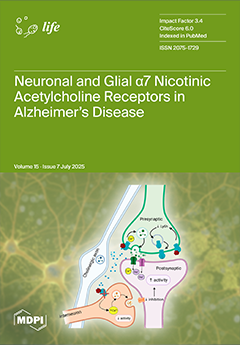Introduction/Objectives: Osteoarthritis (OA) is a chronic systemic disease that affects the entire array of joint structures. It is one of the most common chronic, socially significant diseases, associated with a decline in the quality of life of patients and constantly increasing the cost of treatment. Clinical trial outcomes are largely inconclusive, and OA remains one of the few musculoskeletal diseases without an established disease-modifying therapy. One potential explanation is the use of ineffective tools for OA classification, patient stratification, and the assessment of disease progression. There is growing interest in musculoskeletal ultrasonography (MSK US), as it enables the dynamic visualization of the examined structures and gives information about both inflammatory and structural changes that have occurred. Determining the leading ultrasound phenotype, which depends on the most damaged tissue at a given time (bone, cartilage, synovial membrane, joint capsule, ligaments, tendons, menisci, etc.), can rationalize therapy use by selecting patients more suitable for specific treatments. This article aims to evaluate and summarize the potential of MSK US in the process of determining the clinical phenotype of OA and to emphasize the importance of this imaging modality in evaluating further therapeutic strategies.
Method: A single-center prospective study conducted in the period of September 2023–June 2024 enrolled 259 consecutive patients with proven OA. The statistical program Minitab version 22.2.1 (2025) was used to analyze the data. The predominant and secondary phenotypes were tabulated for each OA localization and were presented numerically and as relative proportions (%). The rate of the most frequently occurring phenotypes was compared against that of the less frequent ones through paired z-tests. The initially acceptable type I error was set at 5%; it was further adjusted for the number of comparisons (Bonferroni).
Results: The most frequent and predominant US phenotype for patients with knee OA was intra-articular effusion (
n = 47, 37.90%). It was significantly higher compared to the rest of the US phenotypes: synovial proliferation (
n = 22, 17.70%;
p < 0.001), cartilage destruction (
n = 26, 21%;
p = 0.001), altered subchondral bone (
n = 8, 6.50%;
p < 0.001), extra-articular soft tissue changes (
n = 12, 9.70%;
p < 0.001), crystal deposits (
n = 6, 4.8%;
p < 0.001), and post-traumatic (
n = 3, 2.40%;
p < 0.001). The most common US phenotype for hip OA was altered subchondral bone (
n = 32, 47.1%), with significant differences from intra-articular effusion (
n = 12, 17.60%;
p = 0.001), synovial proliferation (
n = 5, 7.40;
p = 0.001), cartilage destruction (
n = 12, 17.60%;
p = 0.001), extra-articular soft tissue changes (
n = 3, 4.40%;
p = 0.001), crystal deposits (
n = 3, 4.40%;
p = 0.001), and post-traumatic (
n = 0). Altered subchondral bone was also the leading US phenotype for hand OA (n = 31, 55.40%), with significant differences compared to intra-articular effusion (
n = 1, 1.80%;
p < 0.001), synovial proliferation (
n = 7, 12.50%;
p < 0.001), cartilage destruction (
n = 11, 19.60%;
p < 0.001), extra-articular soft tissue changes (
n = 2, 3.60%;
p < 0.001), crystal deposits (
n = 3, 5.40%;
p < 0.001), and post-traumatic (
n = 1, 1.80%,
p < 0.001). For shoulder OA, extra-articular soft tissue changes were the most frequent (
n = 8, 46.20%), followed by post-traumatic (
n = 4, 30.70%), as the rate of both phenotypes was significantly higher compared to that of intra-articular effusion (
n = 0), synovial proliferation (
n = 0), cartilage destruction (
n = 1, 7.70%;
p = 0.003), and crystal deposits (
n = 0).
Conclusions: The therapeutic approach for OA is a dynamic and intricate process, for which the type of affected joint and the underlying pathogenetic mechanism at a specific stage of the disease’s evolution is essential. MSK US is one of the options for the clinical phenotyping of OA. Some of the suggested ultrasound subtypes may serve as the rationale for selecting a particular treatment.
Full article






